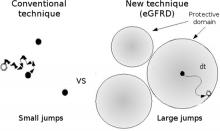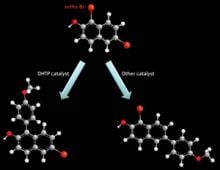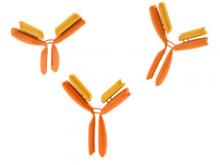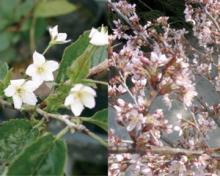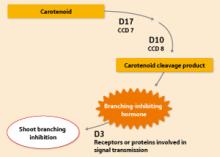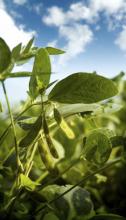Japan
News

05 Mar 2010
The identification of a gene involved in steroid hormone signaling in plants could benefit agriculture and reduce atmospheric carbon dioxide

03 Mar 2010
Protons, neutrons melt to produce ‘quark-gluon plasma’ at RHIC

03 Mar 2010
Researchers at RIKEN and Fukuoka University have pinpointed the mechanism responsible for early rejection of transplanted pancreatic islet cells in the treatment of type 1 diabetes, also known as juvenile diabetes.
03 Mar 2010
A novel technique for ultrahigh-precision simulation of cellular dynamics has enabled researchers to uncover a mechanism underlying a ubiquitous response process in eukaryotic cells.

03 Mar 2010
* Agreement to establish a Joint Center with the Max Planck Society (MPG)
* General agreement for cooperation with the Technical University of Munich (TUM)

26 Feb 2010
Waseda University Corporation and VIED-MOET held a signing ceremony at the Ministry of Education and Training (MOET) in Vietnam on February 10, 2010, upon which a Memorandum of Understanding on academic exchange (MOU) was concluded.

26 Feb 2010
Scientists, researchers and amateur astronomers alike will rejoice at the latest news from the Japan Aerospace Exploration Agency (JAXA) and RIKEN.

26 Feb 2010
Long-predicted physical effects confirmed for the first time by a model system of strongly interacting electrons

26 Feb 2010
Characterization of changes acquired by gene pairs over time reveals principles underlying evolution of gene function
26 Feb 2010
Palladium catalysts containing unique molecular ligands couple aromatic rings together in surprising ways

23 Feb 2010
Press Release - An international consortium of leading scientists from 15 countries, including researchers at RIKEN, has published the first ever complete genome of an aphid species, the pea aphid Acyrthosiphon pisum.

19 Feb 2010
Established in April 2009 through an agreement between RIKEN and Keio University, the Research Center for Human Cognition (CHC) held its first international symposium on December 14 and 15, 2009.
19 Feb 2010
A microchip fabricated with femtosecond lasers at RIKEN allows the rare observation of microalgae behavior

19 Feb 2010
Guanghui Wang writes to Nobuyuki Nukina at the Laboratory for Structural Neuropathology,RIKEN Brain Science Institute
19 Feb 2010
A combination of positive and negative regulation narrowly restricts a genome-shuffling enzyme’s activity

19 Feb 2010
Size-controllable bulky ligands stabilize multiple bonds of heavy elements into photoactive materials

12 Feb 2010
The following paper written by Professor Akihiko Kudo, et al. from the Department of Applied Chemistry in the Faculty of Science Division I relating to water splitting using photocatalyst materials was selected as part of the Chem Soc Rev Top 10 for 2009.

12 Feb 2010
Call for Nominations 2010
Deadline:Noon, Tuesday 23 March 2010 (Japan local time)

12 Feb 2010
Call for Applications : 1 Assistant Professor Position (Non-tenured)

12 Feb 2010
Genome Profiling Technology Unit, LSA Technology Development Group, Omics Science Center
12 Feb 2010
A new breed of cherry blossom tree that blooms all year round has been created by RIKEN scientists using heavy ion beams at RIKEN Nishina Center for Accelerated-Based Science.
12 Feb 2010
Studies on mutant plants provide insights into the role of strigolactone, a plant hormone that inhibits shoot branching and attracts both beneficial symbionts and damaging root parasites
12 Feb 2010
The newly sequenced genome of the soybean could allow for the development of hardier plants

12 Feb 2010
X-rays emitted from the remnant of a supernova provide clues to its explosive history

12 Feb 2010
RIKEN will be hosting a booth at the 2010 Annual Meeting of the American Association for the Advancement of Science (AAAS), to be held in San Diego, Feb. 18-22.

11 Feb 2010
Ambassador Roos said, "Our two countries can take pride in the fact that the U.S.-Japan Alliance has provided a half-century of peace in East Asia," stressing the importance of the U.S.-Japan alliance that has served as the cornerstone of peace and stability.

11 Feb 2010
Japanese and foreign scholars are pursuing a unique study project called “hopology” since 2005 under the slogan “Social Science of Hope.

11 Feb 2010
I have been voicing my dissenting opinion of abolishing the use of Food for Specified Health Uses (FOSHU)—as well as the system itself—on the grounds that consumers are given no guarantee of the effectiveness of such products.

11 Feb 2010
Approximately 170 years have passed since the birth of the media known as photography, and the diversity of expression is being accelerated more than ever.

11 Feb 2010
On January 18th, a “Sending-Off Party for Athletes in the Olympics & Paralympics” was held in support of Waseda University students and alumni who will be competing in the Vancouver Winter Olympics.
Researchers
Sorry, no researchers coming up for this topic.
Giants in history
Ruby Sakae Hirose (1904 – 1960) was a Japanese-American scientist whose research contributed significantly to our understanding of blood clotting, allergies and cancer.
Haisako Koyama (1916 – 1997) was a Japanese solar observer whose dedication to recording sunspots – cooler parts of the sun’s surface that appear dark – produced a sunspot record of historic importance.
Michiaki Takahashi (17 February 1928 – 16 December 2013) was a Japanese virologist who developed the first chickenpox vaccine.
Toshiko Yuasa (11 December 1909 – 1 February 1980) was the first Japanese female physicist whose research on radioactivity shed light on beta decay – the process in which an atom emits a beta particle (electron) and turns into a different element.
Baron Kitasato Shibasaburo (29 January 1856 – 13 June 1931) was a Japanese physician and bacteriologist whose work led to a new understanding of preventing and treating tetanus, diphtheria and anthrax.
By isolating soil microorganisms and studying the compounds they produce, Satoshi Omura (born 1935) discovered almost 500 organic compounds with unique properties that were produced by these microorganisms, including many new antibiotics.
In 1915, pathologist Katsusaburo Yamagiwa and his research assistant Koichi Ichikawa became the first to prove that chronic exposure to chemicals can cause cancer.
In 1915, Koichi Ichikawa along with pathologist Katsusaburo Yamagiwa became the first to prove that chronic exposure to chemicals can cause cancer.
Reiji Okazaki (8 October 1930 – 1 August 1975) and Tsuneko (7 June 1933) were a Japanese couple who discovered Okazaki fragments – short sequences of DNA that are synthesized during DNA replication and linked together to form a continuous strand.
Tsuneko (7 June 1933) and Reiji Okazaki (8 October 1930 – 1 August 1975) were a Japanese couple who discovered Okazaki fragments – short sequences of DNA that are synthesized during DNA replication and linked together to form a continuous strand.
Husband and wife team, Kimishige (3 December 1925 – 6 July 2018) and Teruko Ishizaka (28 September 1926 – 4 June 2019) discovered the antibody class Immunoglobulin E (IgE) that triggers allergic reactions. They also discovered that IgE antibodies attach to white blood cells, known as mast cells, releasing histamine, which causes allergic reactions.
Husband and wife team, Kimishige (3 December 1925 – 6 July 2018) and Teruko Ishizaka (28 September 1926 – 4 June 2019) discovered the antibody class Immunoglobulin E (IgE) that triggers allergic reactions. They also discovered that IgE antibodies attach to white blood cells, known as mast cells, releasing histamine, which causes allergic reactions.
Japanese chemist Takamine Jokichi (3 November 1854 – 22 July 1922) founded the Tokyo Artificial Fertilizer Company, where he isolated a starch-digesting enzyme (named takadiastase) from the fungus Aspergillus oryzae.
Hideki Yukawa (23 January 1907 – 8 September 1981) was awarded the Nobel Prize in Physics in 1949 for predicting the existence of the pi meson subatomic particle. Japan’s first Nobel laureate, Yakawa also expressed his support for nuclear disarmament by signing the Russell–Einstein Manifesto in 1955.
Shinichiro Tomonaga (31 March 1906 – 8 July 1979), together with Richard Feynman and Julian Schwinger, was awarded the Nobel Prize in Physics in 1965, for their contributions to advance the field of quantum electrodynamics. Tomonaga was also a strong proponent of peace, who actively campaigned against the proliferation of nuclear weapons and promoted the peaceful use of nuclear energy.
Japanese chemist Kenichi Fukui (4 October 1918 – 9 January 1998) was the first Asian scientist to be awarded the Nobel Prize in Chemistry. Together with Roald Hoffman, he received this honour in 1981 for his independent research into the mechanisms of chemical reactions.
Minoru Shirota (April 23, 1899 – March 10, 1982) was a Japanese microbiologist who invented the popular fermented drink Yakult.
Japanese physicist Ukichiro Nakaya (1900-1962) made the world’s first artificial snowflakes. He started his research on snow crystals in the early 1930s at Hokkaido University, where there is an unlimited supply of natural snow in winter. By taking over 3,000 photographs, he established a classification of natural snow crystals and described their relationship with weather conditions.
The techniques that make industrial pearl culturing possible were developed over a century ago at the Misaki Marine Biological Station in Japan. The station’s first director, Professor Kakichi Mitsukuri, emphasized to Kokichi Mikimoto in 1890 that stimulating pearl sac formation was important for pearl growth, and they went on to successfully develop methods for culturing pearls.
The field of solid-state ionics originated in Europe, but Takehiko Takahashi of Nagoya University in Japan was the first to coin the term ‘solid ionics’ in 1967. ‘Solid-state ionics’ first appeared in 1971 in another of his papers, and was likely a play on ‘solid-state electronics’, another rapidly growing field at the time.
Chika Kuroda (24 March 1884 – 8 November 1968) was a Japanese chemist whose research focussed on the structures of natural pigments.
Motoo Kimura (13 November 1924 – 13 November 1994) was a Japanese theoretical population geneticist who is best remembered for developing the neutral theory of molecular evolution.
Osamu Shimomura (27 August 1928 – 19 October 2018) was a Japanese organic chemist and marine biologist who dedicated his career to understanding how organisms emitted light.
Kikunae Ikeda (8 October 1864 – 3 May 1936) was a Japanese chemist who discovered the fifth basic taste, umami.
Umetaro Suzuki (7 April 1874 – 20 September 1943) was a Japanese scientist best remembered for his research on beriberi, a disease caused by vitamin B1 deficiency, characterized by limb stiffness, paralysis and pain.
Kono Yasui (16 February 1880 – 24 March 1971) was a Japanese botanist who researched the genetics of poppies, corn and spiderworts and surveyed the plants that had been affected by the nuclear fallout after the atomic bombings of Hiroshima and Nagasaki.
Hitoshi Kihara (1893 – 1986) was one of the most famous Japanese geneticists of the 20th century. One of his most significant contributions was identifying sex chromosomes (X and Y) in flowering plants.
Michiyo Tsujimura (17 September 1888 – 1 June 1969) was a Japanese agricultural scientist and biochemist recognized for her research of green tea components.
A Japanese surgeon, Tetsuzo Akutsu (20 August 1922 – 9 August 2007) built the first artificial heart capable of keeping an animal alive.
Ogino Ginko (3 March 1851 – 23 June 1913) was the first registered female doctor to practise modern medicine in Japan.
Japanese geochemist Katsuko Saruhashi developed the first method and tools for measuring carbon dioxide in seawater


